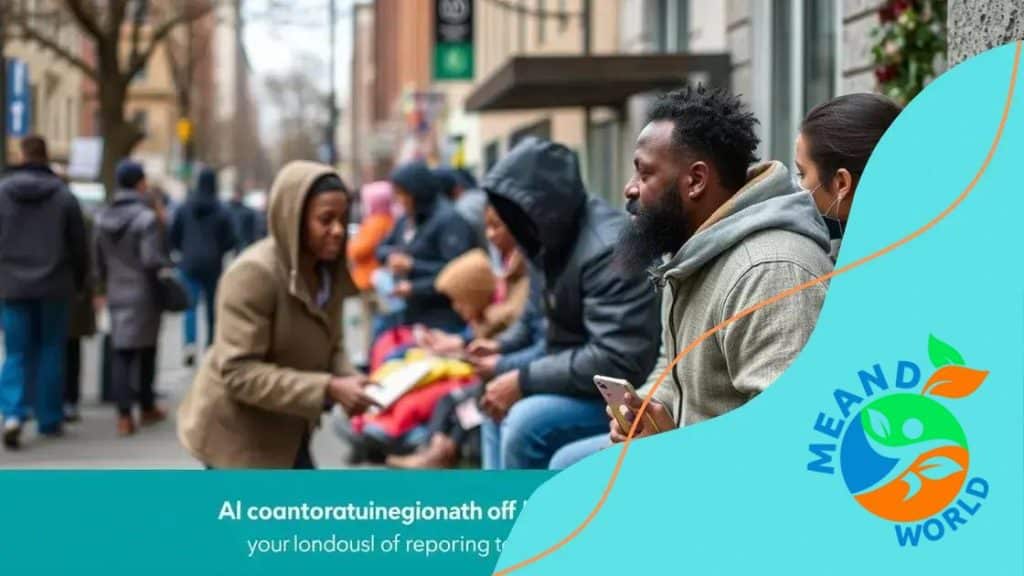How federal funding is addressing homelessness effectively

Anúncios
Federal funding is addressing homelessness through programs like HUD Continuum of Care and Emergency Solutions Grant, focusing on affordable housing, support services, and collaborative efforts among local governments and community organizations.
How federal funding is addressing homelessness is a pressing issue in communities nationwide. With countless individuals affected, understanding these efforts can shed light on potential solutions and inspire action.
Anúncios
The scope of homelessness in America
The scope of homelessness in America is vast and complex. Millions of individuals face the harsh reality of not having a stable place to call home. Various factors contribute to this, including economic instability, health issues, and lack of affordable housing. Understanding the breadth of this issue is the first step in addressing it effectively.
Anúncios
Factors Contributing to Homelessness
Several key elements play a significant role in the rise of homelessness. Identifying these can help communities tailor their responses.
- Economic hardship: Job loss or lack of employment opportunities can push people into homelessness.
- Mental health: Many individuals facing homelessness struggle with mental health challenges, making it difficult for them to maintain stable housing.
- Housing costs: The rapid increase in housing prices in urban areas often outpaces wages, driving many into poverty.
- Substance abuse: This can create a cycle of instability that leads to homelessness.
Beyond these factors, it’s important to consider the demographics of homeless individuals. Generally, this population includes families, veterans, and young adults. Each group faces unique challenges that require specific interventions. For instance, families experiencing homelessness may need access to childcare to regain stability, while veterans could benefit from tailored support services that address their experiences.
Current Statistics
Recent data illustrates the growing concern of homelessness. According to the U.S. Department of Housing and Urban Development, on any given night, more than 600,000 people experience homelessness. This includes individuals living on the streets and others in shelters. Recognizing these statistics helps to highlight the urgency of addressing this issue.
The impact of homelessness extends beyond the individuals directly affected. Communities also face strains on their resources, including healthcare systems and local services. Tackling this issue requires collective efforts and comprehensive strategies that can address its root causes effectively.
Key federal funding initiatives
Key federal funding initiatives play a crucial role in tackling homelessness across the United States. These programs provide vital resources that aim to assist individuals and families in securing stable housing. Understanding these initiatives is essential for comprehending the broader strategy to alleviate homelessness.
Major Programs
Several prominent federal programs focus on combating homelessness. These initiatives not only offer financial assistance but also guide local organizations on best practices.
- HUD Continuum of Care (CoC): This program supports community-based efforts to provide housing and services for the homeless.
- Emergency Solutions Grant (ESG): ESG funds can help shelters maintain operations and provide essential services to those in need.
- HOME Investment Partnerships Program: This initiative provides grants for affordable housing development, directly addressing housing shortages.
- Veterans Affairs Supportive Housing (VASH): A specialized program that pairs housing vouchers with supportive services for homeless veterans.
Through these initiatives, the federal government outlines a comprehensive approach. For instance, the CoC program emphasizes collaboration among local agencies to develop effective strategies tailored to their communities’ needs. By fostering partnerships and directing resources, these programs can create a lasting impact.
Funding Allocation
The allocation of funds through these initiatives often reflects federal priorities. The government typically emphasizes evidence-based practices that have demonstrated success in reducing homelessness. By investing in programs with proven effectiveness, federal funding maximizes its impact on local communities.
The integration of mental health services and job training into housing assistance is another focus area. This holistic approach acknowledges that simply providing a roof is not enough; comprehensive support systems are necessary for sustainable solutions. These funding initiatives actively promote collaboration between housing programs and other essential services.
Success stories from funded programs

Success stories from funded programs provide powerful examples of how federal initiatives are making a real difference in the lives of those facing homelessness. These stories illustrate the potential for change, emphasizing the impact of funding on individuals and communities.
Example Case Studies
One standout example is the implementation of the HUD Continuum of Care program in several cities. This program has successfully coordinated local organizations to create housing-first strategies, which prioritize placing individuals in stable homes before addressing other issues.
- City of San Diego: The local Continuum of Care initiative has reduced homelessness by 30% over three years. By providing supportive services alongside housing, many individuals have regained independence.
- Seattle’s Emergency Solutions Grant: This funding has helped local shelters improve facilities and provide services for families, resulting in a 25% increase in clients finding permanent housing.
- Chicago’s Veterans Affairs Supportive Housing: This program has successfully housed over 1,000 homeless veterans in the past year, providing critical support services that address mental health and job training.
Each of these success stories highlights not only the effectiveness of the funding but also the collaboration between various community organizations. These partnerships have proven essential in ensuring that resources are used effectively and reach the individuals who need them most.
Community Impact
Beyond the individual success stories, these initiatives foster a sense of community and hope. As people transition out of homelessness, they often become advocates for others, sharing their journeys and encouraging participation in local programs. This ripple effect showcases the strength of community engagement and the importance of ongoing support.
With funding creating positive outcomes, communities can see a descendant trend in homelessness rates. It becomes clear that these success stories serve as a blueprint for future initiatives, demonstrating how targeted federal funding can enable real change.
The role of local governments
The role of local governments in addressing homelessness is vital. They are at the forefront of creating policies and programs that directly impact their communities. Local governments work to implement federal initiatives while also tailoring their strategies to meet the unique needs of their populations.
Policy Making
Local governments develop and enforce policies that can mitigate homelessness. By collaborating with community organizations, they can create comprehensive plans to provide housing, support services, and resources.
- Affordable housing initiatives: Local governments often take the lead in developing affordable housing projects to ensure that low-income individuals have access to safe and stable living environments.
- Emergency assistance programs: These programs help residents facing eviction or financial crises. Local governments allocate funds to support families during difficult times.
- Health and social services: By providing mental health resources and substance abuse programs, local governments can support at-risk populations effectively.
Furthermore, local governments often engage with nonprofit organizations to expand the reach of their programs. This collaboration fosters community involvement and ensures that resources are effectively distributed to those in need.
Collaboration with Community Organizations
Working alongside local nonprofits and service providers enhances the efficiency of solutions. Local governments can assist these organizations by offering financial support or resources required to reach their goals. For example, by providing grants or technical assistance, they enable community efforts to flourish.
Local governments also actively participate in community engagement. They hold meetings, forums, and outreach efforts to gather input on homelessness strategies. By hearing directly from residents, local governments can develop targeted programs that address specific challenges within their communities.
This close relationship between government bodies and community organizations helps create a more cohesive strategy to combat homelessness. By working together, both parties can influence policies that are more effective and responsive to the needs of their residents.
Future challenges and solutions
As we look toward the future, the challenges of homelessness remain complex and multifaceted. Various factors continue to contribute to this persistent issue, and understanding these challenges is crucial for developing effective solutions.
Emerging Challenges
One major challenge is the increasing cost of living, particularly in urban areas. Many individuals and families find it difficult to afford housing due to rising rents and stagnant wages. This economic pressure can lead to a higher risk of eviction and homelessness.
- Lack of affordable housing: The demand for affordable housing far exceeds the supply. This gap continues to push vulnerable populations into homelessness.
- Mental health and substance abuse: These issues often co-occur with homelessness. Addressing them in isolation can lead to continued instability for affected individuals.
- Climate change: Extreme weather events and natural disasters can displace communities, exacerbating the homelessness crisis.
In addition to these challenges, the COVID-19 pandemic has had a profound impact. Many people lost jobs and financial stability, leading to increased numbers of those experiencing homelessness for the first time. This uncertainty is likely to continue for years as the nation recovers.
Proposed Solutions
To combat these challenges, a multifaceted approach is necessary. Local and federal governments, along with community organizations, must collaborate on innovative solutions. Increasing affordable housing is essential, as is providing robust support services to help individuals regain stability.
Investment in mental health services and substance abuse programs is equally important. By addressing these issues head-on, we can help individuals find pathways out of homelessness.
Additionally, implementing policies that protect tenants and prevent eviction can safeguard vulnerable populations from becoming homeless. Solutions like rent control and financial assistance for struggling families can make a significant difference.
Ultimately, a comprehensive strategy that combines housing, health, and economic support will be crucial in tackling the future of homelessness. Embracing innovative ideas and fostering community engagement will empower individuals and create resilient communities.
FAQ – Frequently Asked Questions about Federal Funding and Homelessness
What are the main federal funding programs addressing homelessness?
Key federal funding programs include the HUD Continuum of Care, Emergency Solutions Grant, and the Veterans Affairs Supportive Housing.
How do local governments contribute to solving homelessness?
Local governments create policies, provide funding for affordable housing, and collaborate with community organizations to implement effective strategies.
What challenges are looming for the future in tackling homelessness?
Future challenges include rising housing costs, mental health issues, and the effects of climate change that can displace communities.
What innovative solutions are being proposed to combat homelessness?
Innovative solutions include increased investment in affordable housing, comprehensive support services, and tenant protection policies.





